Context
The agri-food sector in Ireland, especially in its large-scale form, and the Irish government have pushed their agricultural growth policy in Harvest 2020 and Harvest Wise 2025. That policy is founded on a syllogism:
Grass-based agriculture in Ireland produces food with less carbon emissions than other countries;
The world needs more food to feed a growing population that is estimated to exceed 9 billion by 2050 and less carbon emissions;
Therefore, the world needs Ireland to significantly expand its food production in order to save the world.
The syllogism rests on a fallacy that has been persistently pointed out by environmentalists and other critics of the government’s agriculture policy. The food being produced, and promoted, by the Irish agri-food-government complex is upscale beef and cheese and milk that is exported primarily to the UK and EU and other international markets. Irish food products are not going to feed the growing masses in developing countries who are underfed or even starving, but rather are going to contribute to more obesity for the world’s well-off. So the populations in the developing countries, where growth will happen, do not need Ireland’s food products, and cannot afford them.
Now we have a thoughtful analysis that puts to rest the fallacious basis for expanding Irish agriculture. The report is A Climate-Smart Pathway for Irish Agricultural Development: Exploring the Leadership Opportunity, by The Institute of International and European Affairs (IIEA) and the Royal Dublin Society (RDS) (July 2016). The report acknowledges, “The Irish food industry has been transformed into a high value added sector mainly supplying wealthy customers…” At 59. And this strategy of moving up the value chain to service customers in the UK and EU will continue for the future.
The importance of this acknowledgement is that the agri-food sector no longer can avoid its failures to adequately address its contributions to rising greenhouse gases (GHG) by claiming it is doing what it does to save the world from hunger. Moreover, the report also undermines the claims by the sector and government that Irish farming is more carbon efficient in producing food than others.
So now we have a more transparent rationale for expanding Irish agriculture: The Irish government and agri-food sector policy is to maximize prices and profits for the farming community and its processors and distributors by selling high-end food products to well-fed, middle-class customers.
As for Ireland’s difficulties in complying with its legal obligations to reduce GHG emissions, the government’s policy is elusive and those difficulties will continue.
While the IIEA/RDS report certainly exposes many of the weaknesses of food security arguments that had been relied on by the government and the sector, it does try to resurrect some justification for the unquestioned growth in the sector through its espousal for a Climate Smart Agriculture, some sort of vision for a “carbon neutral” enterprise, with its “triple win,” and a reliance on afforestation as a carbon sink offsetting GHG emissions.
Around the same time of the IIEA/RDS report, a group of environmental non-government organizations (eNGOs), the Environmental Pillar and Stop Climate Chaos, published a rebuttal to many of the arguments of the agri-food sector. That report, Not So Green: Debunking the Myths Around Irish Agriculture (July 2016), is also covered here and it lays out how Irish farming is not efficient, does not contribute to global food security, adversely impacts the environment and biodiversity, and how afforestation is not a credible climate mitigation measure. The Environmental Pillar is comprised of 29 national eNGOs who work together to represent the views of the Irish environmental sector. Stop Climate Chaos is a coalition of 31 civil society organisations campaigning to ensure Ireland plays its part in preventing runaway climate change. Current members include development, environmental, youth and faith based organisations.
The IIEA/RDS Report
Having dismissed the food-security, feeding-the-world rationale, the IIEA/RDS report tries another tact to justify the move to enrichen the agri-food sector. It does so by calling for a Climate Smart Agriculture (CSA) that will produce a “triple win” of “increasing agricultural productivity and farm income, adapting and building resilience to the climate change impacts, and reducing GHG emissions (where possible).” Emphasis added. That emphasis, and the public relations notion, or quasi-sports metaphor, of a “triple win” strongly suggests yet another ploy to distract the public from the special treatment that the agri-food sector demands and gets.
GHG global emissions from food production may increase by up to 80% by 2050 (at 20), and in Ireland agriculture remains the largest contributing sector to GHG emissions, accounting for 1/3 of emissions in 2014, and expected to constitute 47% of non-ETS emissions by 2020 (at 28-29). The report is quite honest in again pointing out that “At its heart, however, [Food Wise 2025] is a plan to increase food output in the period to 2030, which would result in an increase in absolute gross levels of greenhouse gas emissions.” At 38.
Without much exposition on just what is “climate smart agriculture,” other than sustainable farming, the very concept of a Climate “Smart” Agriculture seems to be riding on the development of smart phones, smart appliances, and smart grids in order to give the rationale some currency. The report admits that “there is a case for greater definitional clarity of what we mean by CSA within the Irish context.” At 11. We suppose it is a phrase that avoids using a useful term like Agroecology which focuses much more specifically and clearly on the ecological implications of farming rather than on the economic benefits. See Report on Agroecology noted in Sources below.
The report claims that Ireland has made some significant advances in addressing the agriculture and land use issues that are critical for food production, and as a result Ireland should strive to become a global leader in CSA.
The proposition that Ireland can be a global leader in CSA seems a stretch, if not fanciful. As the report acknowledges, leadership requires a reputation and one wonders what reputation the report was thinking of. Was its Ireland’s history of non-compliance with EU environmental laws and regulations for years, until the Green Party shared power for a short while, or was it the long-delayed and lar gely ineffectual Climate Action and Low Carbon Development Act 2015, which basically ignored any climate change targets other than to say that Ireland would comply with all its existing legal EU obligations, or perhaps it was the years of pushing for expanded agriculture with no concrete plans for dealing with the increased GHG emissions, especially of methane, all the while pretending the expansion was to feed the poor?
Aligned with this notion of Climate Smart Agriculture, the report stresses the push of the agri-food sector for a vision of a “carbon neutral” agriculture. So now we have a Climate Smart Carbon Neutral Agriculture. The abstract words are beginning to pile up, with notions and visions. Again, though, the IIEA/RDS does save face by acknowledging that “The transparent annual reporting of progress to meeting the agreed vision against key indicators would substantiate claims of leadership by providing hard evidence of progress over time.” At 10. But isn’t that reporting exactly what many in the environmental and civic societies were pushing for in the Climate Change bill and which were soundly rejected by the government? If transparent annual reporting constitutes leadership, and it does, Ireland is lacking and the UK Climate Change Committee (CCC) is doing just that, although the current UK government has become less supportive of the CCC.
Teagasc, the governmental Agriculture and Food Development Authority, pushes for “carbon neutrality” as a way for Ireland to offset agriculture GHG emissions through carbon sequestration by grassland soils, forestry and other land use. At 39. The IIEA/RDS does not seem convinced and reports that “The precise meaning of ‘carbon neutrality,’ however, was unclear to experts and stakeholders with whom the IIEA/RDS consulted, making it challenging to measure progress towards meeting this objective.” At 39. All the report can offer in way of comfort, somewhat like a last-minute, last ditch Hail Mary pass in American football, is that while carbon neutrality may not be considered realistic, “we should not discount the prospect that new technologies will be uncovered in the decades ahead.” At 44. Of course we already have existing technologies in low carbon and methane free energy sources and building efficiencies that remain untapped right now.
Without the feed-the-world rationale, the prayer on which the agri-food sector and government are ultimately relying to justify greater expansion of the food production is for greater efficiency in production, in the sense of emitting less GHGs per unit of production, and for carbon sinks and offsets through afforestation.
As for efficiency, the report discusses various efficiency measures promoted by Teagasc but notes that certain studies have shown that the levels of efficiency vary greatly across beef farms in Ireland. The stakeholders and experts consulted by IIEA/RDS found that GHG-efficiency was often seen as a simple measure of good efforts rather than as an actual “potential yardstick to measure and drive future progress.” At 37. We also note that the emphasis by the sector is on carbon-efficiency, which completely ignores the substantial impact from methane, a potent GHG.
The report concludes that productive efficiency gains globally “will not yield anything close to the levels of mitigation required from agriculture.” At 65.
With regard to the possibility of afforestation saving agriculture, there is little to be optimistic about. While the EU has indicated that carbon sinks may be used for compliance with GHG emission targets post 2020, there is much uncertainty to what extent that will be allowed and what will be the accounting mechanisms for identifying and measuring carbon sinks.
The report faces the reality that, “Without a substantial contribution from the carbon sinks, in particular forests, it is difficult to see Ireland’s likely future targets being met.” At 11. Yet Ireland has one of the lowest levels of forest cover in the EU, at about 11%. While the government has an objective to increase the level of forest cover from 11% to 18% by 2046, that is an objective and there does not seem to be in place an actual plan to make that happen. Indeed, current targets for afforestation are for planting 7,300 hectares per year, yet to reach an 18% increase by 2046, there would have to be 16,000 hectares per year planted. At 49-50. So current plantings have no way of meeting the “objective” of the government. Moreover, a survey by Teasasc found that only 3% of farmers were considering planting forestry in the next three years. At 52.
It is no wonder that the report concludes, “The impact of different rates of afforestation on beef and dairy farming is not currently well understood” and needs further analysis. At 50. The report stresses that there are few options to avoiding significant compliance costs with respect to Ireland’s 2030 EU targets without achieving the 2046 objective for afforestation, except of course “dramatic reductions to the national herd.” At 50. This last option is not explored at all in the IIEA/RDS report.
Despite the clarity of its assessment of the state of agriculture and climate change in Ireland, one glaring weakness of the IIEA/RDS report is the fact that the report mentions the word “methane” only once in the over 70 pages of the report. At page 41. Methane accounts for over 75% of GHG emissions from Irish agriculture, which account for about 30% of Ireland’s total GHG emissions, and any argument that the solution to this climate problem relies on a vague, undefined and elusive notion of “carbon neutrality” is fundamentally flawed.
Thankfully, the Environmental Pillar/Stop Climate Chaos (eNGOs) report does address methane, as well as various shortcomings of the agri-food sector.
The Environmental Pillar/Stop Climate Chaos Report
The eNGO report makes a valuable contribution missing from the IIEA/RDS report: the adverse environmental impacts from agriculture. These impacts are uncontested and need to be accounted for in any economic assessment of the agri-food sector.
Certainly it is clear that agriculture is a major contributor to the eutrophication of Ireland’s rivers and lakes, including over 70% of phosphates found in inland waters coming from agriculture. Studies also show that rivers with high quality are found where there is little intensive agriculture in the surrounding area. Equally clear, from reports under the EU Habitats Directive, is that agriculture and forestry represent the two largest threats to designated habitats and species.
Ireland’s biodiversity is at risk from agriculture with 1/3 of bees under threat of extinction, in large part because of loss of habitats. Ten of 37 birds on the Red List of threatened birds are associated with farmland and upland habitats, including barn owls and Curlews, which have declined from 5,000 breeding pairs in 1990 to less than 200 pairs now.
As for the agri-food sector’s argument that they are feeding the poor, the eNGO report agrees wholeheartedly with the IIEA/RDS that the argument is meritless and Irish food products are marketed to middle class communities, not the poor of the world. The eNGO report also adds another dimension to this analysis. It points out that efforts to address food security, rather than production, need to support the majority of the world’s farmers who are small scale, local, subsistence farmers. For example, such farmers produce 70% of Africa’s food supply, using sustainable agro-ecological practices. It is such farmers who are feeding the poor.
In addressing the argument about the efficiency of Irish agriculture the eNGO report provides a different perspective than the IIEA/RDS report. The eNGOs argue that the Irish agri-food sector produces animal-based food which is not efficient for several reasons. Cows and sheep are climate inefficient because their production requires large inputs of land, grain, water, and/or fertliser, and much of the grain is imported, thereby depriving other global communities of that grain as a food source. That production also generates large amounts of methane and nitrous oxide. “Methane produced per head of cattle has increased in Ireland since 1990.” At 4. As the eNGO report notes, the government agency Teasasc pushes “carbon” efficiency but ignores methane emissions, yet climate mitigation requires all GHG emissions be reduced.
And the eNGOS argue, based on research, that “Ireland is less efficient than the European average in greenhouse gases per calorie of bovine food production.” At 4. In contrast to animal foods, plant-based foods are far more efficient in producing protein per calorie or per kilogram, and far more plant-based food calories and protein can be grown on far less land than needed for beef, dairy or sheep. At 3.
For the eNGOs, Climate Smart Agriculture should mean reducing, not expanding, the production and consumption of meat and dairy products, and instead supporting self-sufficiency in developing countries. The Irish government uses the term, CSA, “as a diversionary cover for the unsustainable intensification of livestock production.” At 3.
Yet the lifting of the EU milk quotos in 2015, and consequent expansion of dairy herds under Harvest Wise 2025, and over-supply globally, led to a highly volatile market in milk prices and Irish farmers recently have suffered large financial losses. As a result the EU has re-established market intervention schemes to compensate for these losses.
As for afforestation providing carbon sinks that will act as offsets for agricultural GHG emissions, the eNGO analysis undermines such a claim. As studies have shown, “this argument is scientifically flawed because the off-set available is only a small fraction of potential fossil fuel emissions.” At 7.
Afforestation can deliver significant environmental benefits, when properly sited and when planted with appropriate, native species. But, as pointed out above, forestry and agriculture are the two largest threats to Ireland’s habitats and species. This treat is in part the result of planted monoculture forests replacing more diverse habitats. In addition, forestry practices such as drainage during ground preparation, use of pesticides, and clear felling negatively impact on water quality.
The eNGO report also discusses the UN Intergovernmental Panel on Climate Change (IPCC) view that land sequestration, as with forests, is impermanent (the trees fall or are cut) and is highly uncertain.
What is most disturbing is that the Irish government pushes for creating carbon sinks through forestry, even with their adverse environmental impacts, at the same time it ignores and even actively allows the destruction of Ireland’s most productive and ecologically important carbon sinks, its peatlands or bogs. “Peatlands cover less than 3 per cent of the global land surface but store more than is contained in the vegetation of the world’s forests.” At 7. About 20% of the Republic of Ireland is covered with peat soils, and bogs not only store carbon but they continue to absorb carbon dioxide as they grow. Unfortunately, the government has been lax in, if not actively resistant to, protecting the bogs from industrial and domestic cutting, overgrazing by animals, and developmental incursions. As a result the disturbed bogs have been releasing more carbon than could be sequestered by Irish forests. In other words, if the government would protect the bogs as carbon sinks, there would be less need for more forests.
Preservation of the bogs would include rewetting or restoration of degraded peatlands, to reduce carbon emissions and create carbon sequestration, and the use of non-peat sources of energy.
For the eNGO report, CSA more appropriately include a substantial reduction in total cattle numbers, with more plant-based food sources, and the preservation and restoration of peatlands.
Conclusion
The conversation about Irish farming has now been fundamentally changed and made more transparent. That conversation should never allow a claim that agriculture in Ireland is being expanded in order to feed the poor of the world. For that we can thank the IIEA/RDS report and the eNGO report. But as Paddy Woodworth elucidates in the The Irish Times, the conversation is hardly in agreement on where we go from here in dealing with the adverse impacts of the agri-food sector.
There is nothing wrong with the government supporting a sector so that it makes as much money as sensible, and pays its share of taxes. There is something wrong when the government exempts this sector from the onerous obligation to reduce its GHG emissions, in absolute numbers, when Ireland is legally obliged to reduce those GHGs and the government is vague and evasive about just how those GHGs will be reduced and by whom. At the same time, Ireland has been lobbying the EU to lighten its load in carrying the burden of reducing GHG emissions, in large part to protect agriculture. As John Sweeney, the leading Climatologist has recently said, “Sadly, behind the scenes, Ireland, though ostensibly concerned about climate change, wants everyone but itself to do something about,” so that Ireland is quickly becoming “the freeloaders of Europe.”
The agriculture sector is quite content with all this protection. The farm sector organization, Irish Farmers’ Association (IFA), recently claimed that it is incapable (or unwilling) to reduce its carbon dioxide emissions by more than 8% (again, total silence about methane). In addition, “The IFA president said farming’s greatest contribution to mitigating climate change would come in supporting the efforts of other sectors.” It’s an extraordinary statement. In other words, the farmers’ greatest contribution to GHG reductions will be to watch others, in transport, buildings and energy, struggle with whatever reductions are necessary.
Several years ago at a conference on climate change sponsored by the Irish EPA, a member of the audience, whose tweed coat and manner of speech suggested an academic, stated that if Ireland adopted all the existing technological improvements to building energy efficiency, the government could allow agriculture to grow as much and as fast as they wanted without adversely impacting Ireland’s obligations to reduce GHGs. Whoever that commentator was, the point was well taken: the Irish government has failed to analyze where savings in GHG emissions will come in transport and buildings if agriculture is given free rein as it has. As an editorial in The Irish Times pointed out, the government’s “action-oriented” plan for new homes “has almost nothing to say about the energy efficiency of the 25,000 new homes that it expects to be built annually by 2030. That, in itself, is a measure of Ireland’s complacency about climate change.”
Sources:
Joseph Curtin and Tom Arnold, with Tom Kirley, A Climate-Smart Pathway for Irish Agricultural Development: Exploring the Leadership Opportunity, by The Institute of International and European Affairs (IIEA) and the Royal Dublin Society (RDS) (July 2016). www.iiea.com/ftp/Publications/IIEA_CSA%20Leadership%20Forum%20Final%20Report_Digital%20Version.pdf
Irish Environmental Pillar and Stop Climate Chaos, Not So Green: Debunking the Myths around Irish Agriculture (July 2016). environmentalpillar.ie/not-so-green-debunking-the-myths-around-irish-agriculture/
“Agroecology: Is there a clear green path from monocultures to diversity in agriculture?” in Reports section of irish environment magazine (July 2016). www.irishenvironment.com/reports/agroecology-clear-green-path-monocultures-diversity-agriculture/
European Commission, Press Release, European Commission outlines new support package worth €500 million for European farmers (18 July 2016). europa.eu/rapid/press-release_IP-16-2563_en.htm
John Sweeney, “Stormy outlook: average summer for this generation, a bad summer for the next: ‘Temperatures in Ireland are running more than 0.5 degrees higher for the three summer months than the average for 1961-1990’, The Irish Times (20 Aug 2016). www.irishtimes.com/opinion/stormy-outlook-average-summer-for-this-generation-a-bad-summer-for-the-next-1.2762138
Paddy Woodworth, “The new farming: profit trumps all? Climate change means being smart about agriculture. But a key report, A Climate-Smart Pathway for Irish Agricultural Development, struggles to find a common vision,” The Irish Times (20 Aug 2016). www.irishtimes.com/news/environment/the-new-farming-profit-trumps-all-1.2759211
“’Farm sector can’t deliver more than 8pc cut in CO2 emissions’ – IFA,” Irish Independent (27 July 2016). www.independent.ie/business/farming/farm-sector-cant-deliver-more-than-8pc-cut-in-co2-emissions-ifa-34911008.html
“Climate Change targets are eased for Ireland; the land of slow learners,” The Irish Times (23 July 2016). www.irishtimes.com/opinion/editorial/climate-change-targets-are-eased-for-ireland-the-land-of-slow-learners-1.2731464


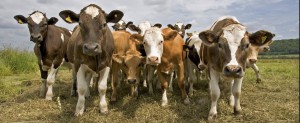
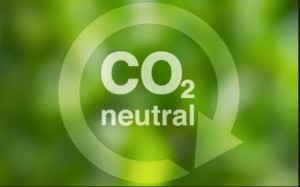
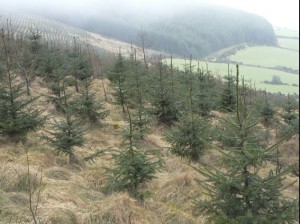
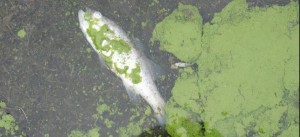
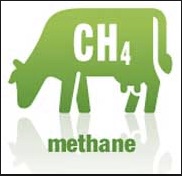
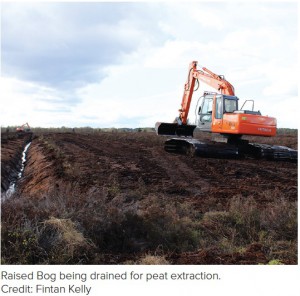
No comments yet, add your own below